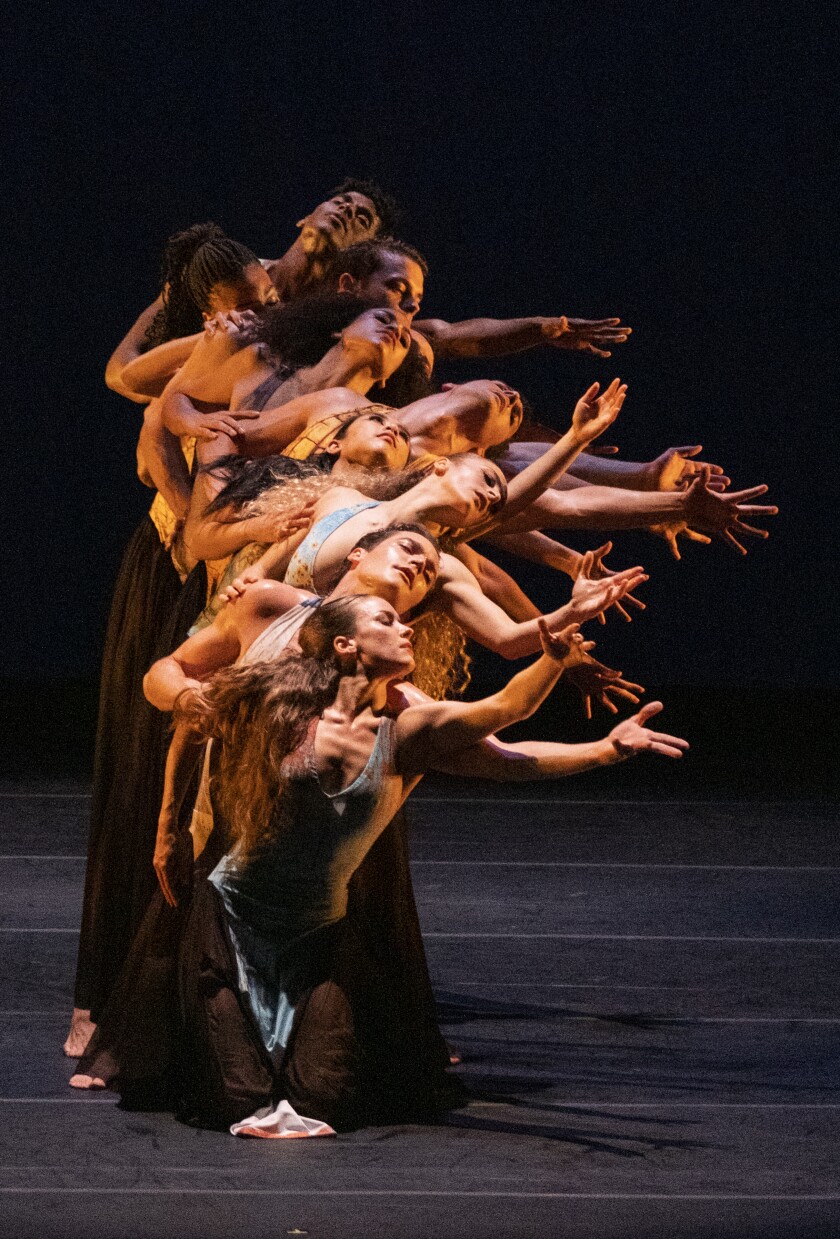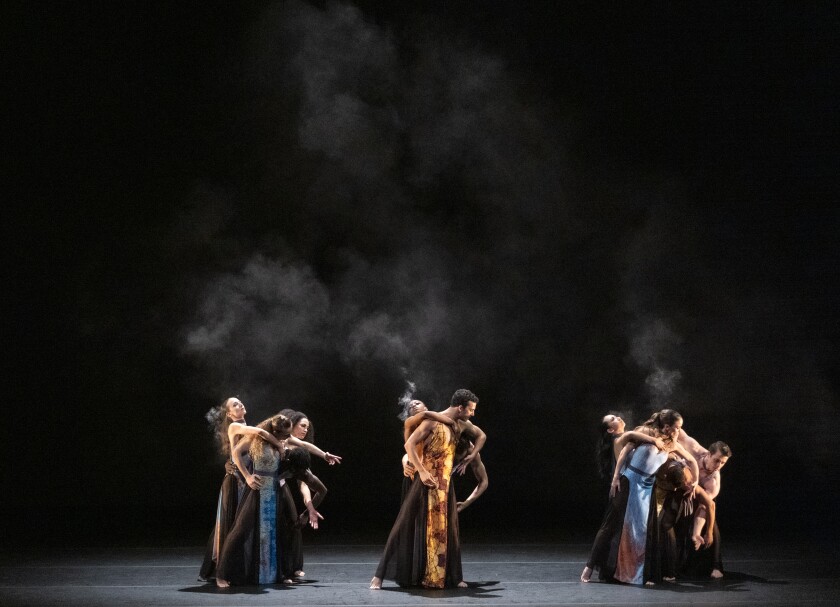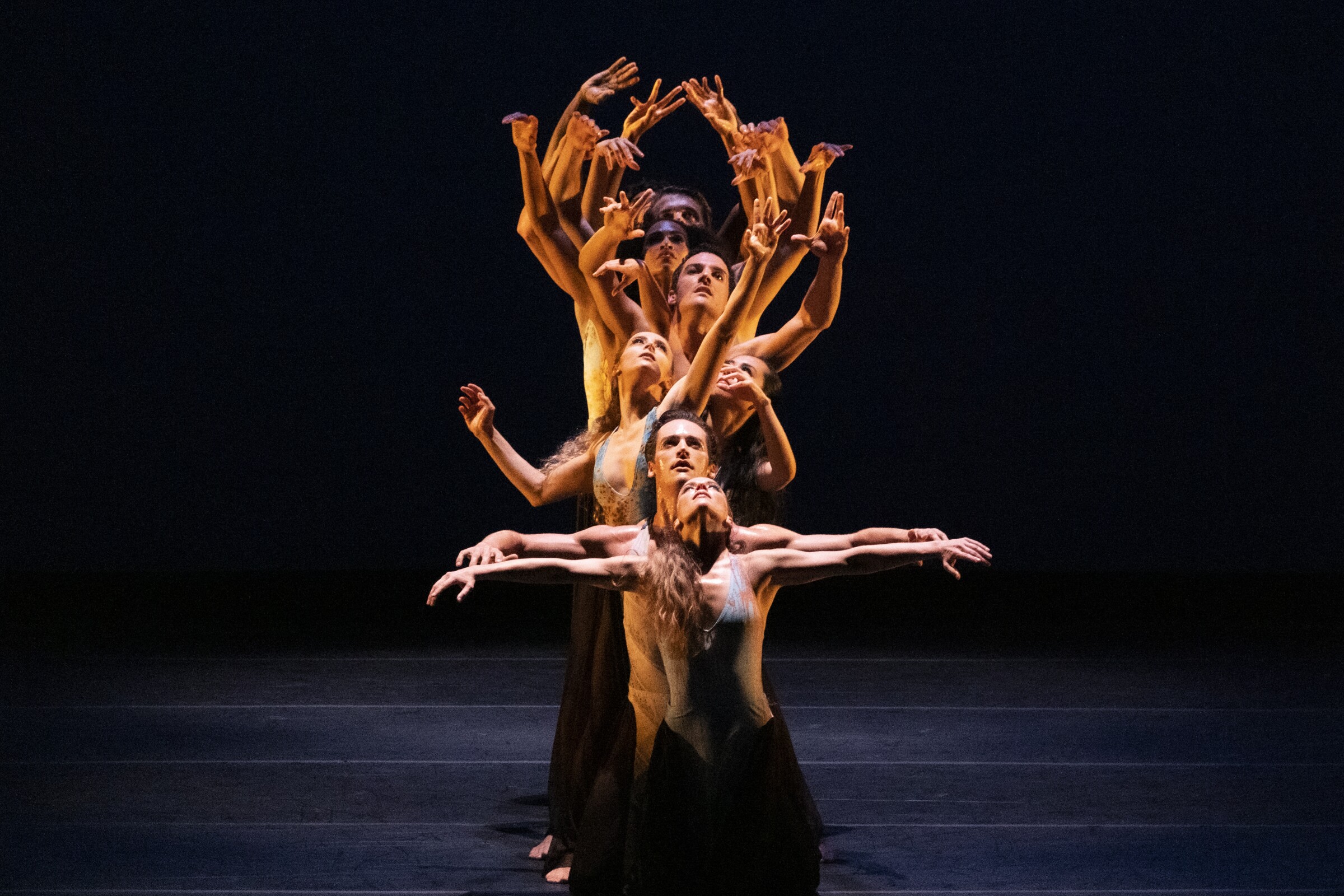Jason Moran calls himself a jazz pianist. He is one — and one of the best. He’s an exciting and unpredictable improvisor. He has a remarkable harmonic imagination. He can write a good tune. He possesses an advanced inner rhythm machine. He’s equally fluent in tradition and progress. He’s as fluid and versatile a musician as they come, able to encompasses all the arts.
But the first thing you notice about Moran is the sound he gets out of the piano, which is neither well-described as fluid nor versatile. It seems to come from a source too deep for that. The resonances overpower the senses. A single struck note not only sounds grounded but also feels grounded, as though it were coming from under your feet and then filling the space with a sonic aura. When his wrists travel up and down the keyboard in roaring glissandos, the reverberation becomes the soul-filling and soul-thrilling sound of tectonic plates colliding. If your knees are like mine, they shake.
Lately, Moran’s reverberations have been traveling far and wide, filling grand physical spaces while also creating theatrical spaces in opera and dance. In January, he filmed three solo piano pieces in the grand foyer of the world’s most monumental modern concert hall, the Elbphilharmonie in Hamburg, for the venue’s a grand space overlooking a grand expanse. Moran’s playing is surprisingly intimate, yet even on video, he evokes the sense of a soaring space.


Monumentalism has been clearly on his mind. On March 5, the Washington National Opera gave the premiere of “Written in Stone,” a project of four one-act operas by different composers and librettists, that consider the fraught connotations of our capital’s national monuments. The sequence begins with Moran’s “Chantal,” which is described as an introduction to the complicated cultural significance of monumentalism.
That same day, one of America’s leading choreographers, Ronald K. Brown, brought his company, Evidence, to Royce Hall for a “first glimpse” of “The Equality of Night and Day,” a work-in-progress commissioned by UCLA’s Center for the Art of Performance and for which Moran wrote the piano score. That was followed by two back-to-back world premieres of major dance pieces with new music by Moran. First there was Alonzo King’s “Single Eye” as part of American Ballet Theatre’s four-day residency last week at Segerstrom Hall in Costa Mesa; it ended Saturday. On Saturday at the Soraya, the Martha Graham Dance Company reimagined a lost work by the iconic choreographer, “Canticle for Innocent Comedians,” with Moran playing a new score onstage to accompany the dance.
Each of these three dance works matters. Dealing with social and environmental and political concerns at an exalted level, they matter in our moment of history. They also matter because Moran creates the acoustic space where they can matter. When you look, you must listen, and not all modern dance knows that.
From the second you hear Moran touch a key on his piano — even when it’s only on recording, as was the case with the first two dances — you are invited to open your ears. The sound of his piano becomes a physical presence that in a mysterious but real way connects you with the space you are in, as well as with those onstage.
The effect is to raise awareness to the level that John Cage did with Merce Cunningham, where music and dance do not need to operate hand-in-hand. They remain individual yet also part of the larger experience, which is how we take in the world. There are times when Moran can soothe with a gentle melody; when he can awaken with somber, blues-induced deep reflection; when he can make into ferociously repeating arpeggios that ring like gongs summoning you to attention. The dance, for its part, can be intense, violent, loving, lyrical or decorative. But domination of one medium over another is out of the picture. The sense of space created by Moran’s sound liberates the mind, making it susceptible to independent observation.

This is an extraordinary feat in Brown’s “The Equality of Night and Day.” The score features recordings of activist and scholar Angela Davis speaking of “humans all over the world fighting for our humanity,” as she examines the nuclear family, the unequal treatment of Black men in our prisons and other wrongs she has spent her life attempting to correct. Moran’s reflective response matches her tone, assertive and sensible.
Brown’s dancers, in blue robes, undertake an exercise in sustained beauty that is communal rather than individual, elegant in movement. For a half hour, it becomes possible to believe in the logical inevitability of betterment, which has become the rarest quality of modern discourse.
While ABT offers no background to King’s “Single Eye,” the choreographer prefaces it with a quote from Matthew 6:22: “If thine eye be single, thy whole body shall be full of light.” That single eye, though, needs a single ear to take in a vast soundscape, to say nothing of a large contingent of dancers. For King, who is one of the arts’ most eloquent and determined advocates for the environment, the body and nature are one.
Nature, however, is not able to be boiled down. In his seven dances, consisting of virtuoso ensemble numbers, solos and pas de deux, athletic dancers in earth colors are the expression of survival, with community meaning everything. Added to Moran’s solos are sound recordings by Bernie Krause, taken from nature, broadening the vista and reminding us that the fight for humanity entails humans accepting that we are not alone on this planet.


Remarkably, the sections flowed smoothly, the differences in movement seeming less extreme than they were, due in great part to Moran’s musical narrative. His range was wide, where repeated single notes could morph into bell-like broken chords that turn into the sound of broken glass. Bass notes beat as if drums. Those big glissandi required white gloves to protect the pianist’s hands. In all, this extraordinary journey in sound produced the sense of whole. The music, coupled with the varied choreography, suggested that multitudes of movement are what must be preserved if we are to preserve our environment.
Moran’s epic score does just that here, absorbing a multitude of musics, from spiritual to lullaby, from influences that can include Monk, Ravel and Stockhausen (those earthquakes of glissandos). It all becomes one. Dancers as individuals, in the end, line up together like a single organism that then breaks apart.
In “Canticle for Innocent Comedians,” “The Equality of Night and Day” and “Single Eye,” Moran has found the sound to make the existential connection with past and future. It would take some doing to put these three essential dances, made for three different companies, on the same program. But that is where they belong, because they make us see and hear where we belong.







More Stories
Eric Gales՛s new album 2025, releases single with Buddy Guy & Roosevelt Collier: Video, CD cover
I usually practice with the door open. I always played like that, hoping someone would walk by and discover me: Ahmad Jamal once confessed: Video, Photos
Terry Riley. A landmark reissue of one of the most important figures in 20th-century music: Videos, Photos